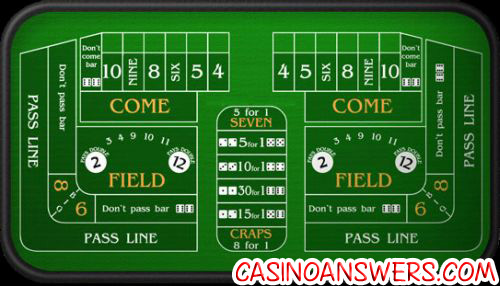Craps Dice Rolling Technique


Since there cannot be any other winning strategy in craps except through a dice strategy, a lot of dice control techniques have been put forward as keys to winning at craps. But 1996 ushered in a new era in craps method of dice control—the PARR dice control strategy.
The Patterson Rhythm Roll or PARR was developed by Chris Pawlicki and Ferry Patterson. It's been one of the most effective dice control every devised for craps. The motions principle of Physics was somehow applied to dice throwing so that it would yield more predictable outcomes. The thing here is that over a period of throwing the dice repetitiously in a certain way or motion technique, there would be a certain constancy in the dice result eventually.
The PARR dice control has a ratio of 1:6 dice result; the losing result will appear only once in six tries. Thus, the losing sevens has a slimmer chance of appearing with this throw technique than if we just throw the dice randomly without any throwing motion tactic. The PARR technique claims, with sufficient time of practice, we can greatly influence the dice result through the manner in which we throw them. The frequency of the dice winning result is called Sevens to Rolls Ratio or SRR.

The dice faces are arranged in such a way that a sum 7 can be possible in more ways than one. The bad news is that 7 is frequently a losing number. The trick then is to lessen the occurrence of a 7; if possible, make the chance of a 7 merely once within 7 throws, or an SRR of 1:7. When this becomes possible, then we plan bets accordingly. In this way, the casino odds are said to be rendered ineffective.
- Craps Dice Control Technique. Many people doubt that there can be ways that the rolling of the dice can be controlled in such a way that it will result to the shooter's desired number. But for some gambling experts the idea is not impossible. The technique of dice control in craps is a play of advantage that has three important elements.
- Basic craps Statistics. One question I get asked a lot is 'what is the probability of a shooter lasting x rolls in craps?' The following table answers that question for up to 50 rolls. The first column is the roll number. The second column is the probability of a seven-out on exactly that roll.
- Yes, as it turns out there is, and there are books that will teach you how to do it. The idea is called Dice Control and wiki describes it like this Dice control in casino craps is a controversial theory where proponents claim that individuals c.
- The dice should look as though they are connected (like the ‘dice bar) as they travel through the air. Finger position, pressure and release technique will be key focus areas to execute the toss correctly. You’ll be setting the dice to the 4/5-4/5 set (4s on top, 5s in front) prior to gripping the dice each time.
Craps Dice Rolling Techniques Free
With an SRR of 1:7 made possible by a physics principle of arm and body motion and the exact estimated force to propel the dice and considering the bouncing factor, the next thing to have is the right grip with the hand. All this should have a consistency each time a throw is made. Along with this came special dice sets that are designed to yield certain dice results.
Craps Dice Rolling Techniques
Accordingly, PARR technique combinations of the right throw motion, grip, and set of dice really result to an almost perfect dice result accuracy, even done several times, as was witnessed in an actual demo by the SharpShooter.
Craps method of PARR dice control is good to practice for a game said to be won purely by luck.
Craps Dice Rolling Technique

Rolling the dice should be gentle and should resemble the way players throw a basketball into the hoop. You should let the craps dice go when you have reached a three-fourth of the throw. Do not twist the dice in all directions in the air. When in midair, the two dice should stick to each other like they have been glued.